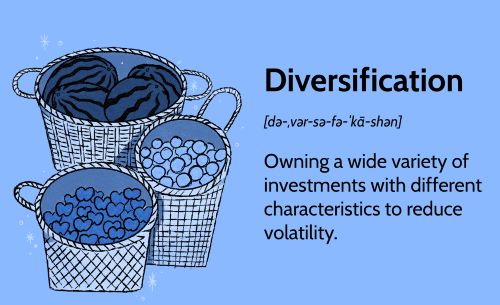

Introduction
Diversification is a fundamental principle in investment strategy, aiming to reduce risk by spreading investments across different assets. This strategy is based on the notion of not putting all your eggs in one basket. By diversifying, investors can potentially minimize the impact of poor performance from a single investment, while also seeking to capture returns from different sources. So, if you are a newbie in the world of investing, the Bitcoin System can help you by connecting you to one of many investment education firms out there so that you can learn more about investing.
The Theory Behind Diversification
At its core, diversification is about spreading risk. If one asset in a portfolio performs poorly, the hope is that other assets will perform better, helping to balance out overall returns. This approach is rooted in the concept of the efficient frontier, which illustrates the trade-off between risk and reward. By diversifying, investors can seek to optimize their portfolios to achieve the highest return for a given level of risk, or conversely, minimize risk for a given level of return.
Types of Diversification
There are several ways to diversify a portfolio:
- Asset Class Diversification: This involves investing in different types of assets, such as stocks, bonds, real estate, and commodities. Each asset class has its risk-return profile, and by diversifying across asset classes, investors can reduce the impact of poor performance in any one asset class.
- Geographic Diversification: Investing across different regions or countries can help reduce the impact of economic or political events that may affect a specific country or region. This approach can also provide exposure to different currencies and economic cycles.
- Sector Diversification: Allocating investments across various industries can reduce the risk of sector-specific downturns. For example, if one industry is experiencing a downturn, investments in other sectors may continue to perform well.
Benefits of Diversification
Diversification offers several key benefits:
- Risk Reduction: Diversifying across assets can help mitigate the risk of significant losses from any one investment.
- Potential for Higher Returns: While diversification cannot eliminate risk, it can potentially increase the likelihood of capturing returns from different sources.
- Smoother Investment Experience: By spreading investments across different assets, investors may experience less volatility in the value of their portfolios.
Challenges and Considerations
While diversification can offer significant benefits, there are also challenges to consider:
- Over-diversification: While diversification can reduce risk, over-diversification can dilute potential returns. It’s important to strike a balance between risk reduction and return optimization.
- Correlation: It’s crucial to ensure that assets in a portfolio are not highly correlated, as this can limit the effectiveness of diversification. For example, if two assets move in lockstep, diversifying between them may not reduce risk.
- Costs: Managing a diversified portfolio can incur costs, such as transaction fees and management fees. It’s important to consider these costs when implementing a diversification strategy.
Implementing a Diversification Strategy
To implement a diversification strategy, consider the following steps:
- Set Investment Goals and Risk Tolerance: Define your investment objectives and risk tolerance. This will help guide your asset allocation decisions.
- Select a Mix of Assets: Based on your goals and risk tolerance, select a mix of assets that can help you achieve diversification. This mix may include stocks, bonds, real estate, and other asset classes.
- Regularly Review and Rebalance: Periodically review your portfolio to ensure it remains diversified according to your goals. Rebalancing may be necessary to maintain your desired asset allocation.
Real-World Examples
Case studies of successful diversification strategies can provide valuable insights. For example, during the 2008 financial crisis, diversified portfolios that included bonds and other fixed-income securities fared better than those heavily invested in stocks. Conversely, portfolios that were too heavily concentrated in a single asset class or sector suffered significant losses.
Conclusion
Diversification is a powerful strategy for balancing risk and reward in investment portfolios. By spreading investments across different assets, investors can reduce the impact of poor performance from any single investment, while seeking to capture returns from different sources. While diversification cannot eliminate risk, it can help investors achieve a more stable and potentially rewarding investment experience.


